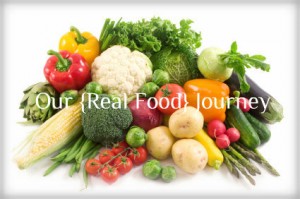If you’re new to this series, start here!
Food, especially real organic food, is a huge cost! These are 11 suggestions to make eating real food affordable!
Make Choice Investments
Decide what YOU feel is most important to be of the highest quality and invest in those (personally: the dirty dozen, grass-fed beef/pasture-raised chickens, pastured eggs, and organic milk)!
The Dirty Dozen and Clean Fifteen
If it is not always feasible to buy strictly organic, by buying only the most contaminated foods organic, you can save a little where it might not be harmful.
Meal Plan
Before haphazardly buying expensive ingredients, know what you’re planning to make that week and buy only what is necessary. I can’t tell you how many times I shop without a plan and buy something because “we might need it.” I should save myself the time and just throw cash in the garbage!
Buy and Prepare in Bulk!
For example, over last winter I was buying frozen, organic broccoli for Max at about $2.50/lb. (not a ton, but enough to have on hand for him to be eating greens). Over the summer, I bought pounds…and pounds…and pounds of it at under $1/lb. from the farmer’s market, blanched it, froze it and ate it for months! I saved 60% by buying locally, at the peak of the season, and putting in just a little effort! I buy all of our oats, grains, beans, nuts, seeds, oils, sweeteners, etc. in the bulk section or large quantity.
This also does wonders for not wasting food (a.k.a. saving money). I make these mini-pizza bites (which are AWESOME for dinner in a pinch and a great snack for movie nights). The first time I made them, I only had enough dough to use half the bottle of sauce and then it ultimately went to waste. The next time, I made twice as much dough, used one package of mozzarella and one jar of sauce, yielded a greater amount of food (for the freezer) and no ingredients went to waste.
Compare Prices
While most of the time it is cheaper to buy in bulk, sometimes it is not. Do your research to know HOW and WHERE to find the best price. Where I usually shop it is cheaper to buy raisins by the box than in bulk and I learned that I can buy the exact same local honey for $2 cheaper at the Farmer’s Market! (Side note: you don’t need to know all of this immediately, I usually learn something new or make a change every shopping trip! Just keep your eyes open and as you learn where to find the best deal, plan your shopping trips accordingly).
Homemade/From Scratch
Certain items (like Homemade Yogurt, Granola, Graham Crackers, Almond Butter, Pizza Dough, etc.) are simple to make, often healthier than store bought, and much cheaper than buying already prepared.
Utilize the Freezer
The freezer is the perfect way to not only preserve the obvious (things you’ve made with the intention of freezing, bulk/homemade prep), but also things that might not get used before expiring. I pour yogurt or milk (close to expiration) into ice cube trays and they are perfect to use later in smoothies. The possibilities here are endless, but I also save leftover coffee, prepared teas, herbs, etc. and am able to use them later, rather than making more and again throwing half away.
Meatless Meals
Meat is usually the most expensive component of a meal. Shoot for AT LEAST one dinner per week that does not incorporate a meat protein (for cost and health purposes).
Stretch your Meat
Meat should be eaten as a small portion or used as a flavoring agent.
For example, I always add about 1.5 cups of cooked quinoa to 1 lb. of ground beef for tacos (or lentils or black beans…or a combination of whatever we have on hand). We all especially love the quinoa because: a.) it is a complete protein (and equally as filling as the beef) b.) it has a similar size/texture to ground beef so it is not noticeable, c.) it absorbs the taco seasoning to taste the same, and d.) it makes the meat go twice as far for at least 1-2 more meals (for ALL of us).
Frugal Meals
Get back to the basics; it is entirely common and normal in many (healthy) cultures to eat meals of rice, beans , vegetables and maybe a small amount of meat. Not every meal needs a slab of meat and four courses. Think eggs, stews, stir-fry (large amount veggies, medium amount rice, small amount meat), etc.
Join a CSA
Community Supported Agriculture is an awesome way to support local agriculture and businesses, offers large amounts of produce for good prices (so much so they can often be split with another family/neighbors), and many health insurance companies offer reimbursement for “healthy living” expenses. I have one friend who is paying about $12.50 cents for this WHOLE summer’s produce because they went in with friends and are getting reimbursed, I’d say that is a HUGE savings!
Grow your Own, at least some!
We are really just venturing into gardening this year. I know not everyone has a ton of space or time to tend one, but even just one tomato plant and some herbs on your porch could cut costs for numerous meals. And anyone has time for that!
Do you have additional ways to save? Comment below!
Becca V
Latest posts by Becca V (see all)
- My New Favorite Carseat - September 16, 2016
- Quick Lit: April 2015 - April 15, 2015
- How’s It Going? - February 24, 2015








Love this Becca! So helpful!!
I am so happy!